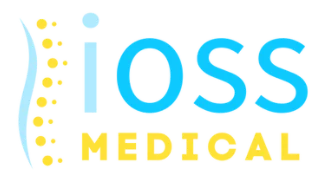Charting Your Course to Comfort: Navigating the Road Ahead After a Medial Branch Block
In this article, you will learn what is the next step after a medial branch block. Welcome to the world of pain management, where innovative procedures like the medial branch block can offer a ray of hope for those seeking relief from spinal pain. If you’ve recently undergone a medial branch block, congratulations on taking a significant step toward understanding and managing your pain.
Now, let’s navigate the path that follows this procedure and explore what comes next in your journey to finding lasting relief and reclaiming your quality of life. From post-procedure evaluations to potential further interventions, this guide will walk you through the essential aspects of what lies ahead after a medial branch block.
1. Post-Procedure Evaluation:
Following the medial branch block, a crucial step is the scheduled follow-up appointment with your healthcare provider. This consultation serves as a comprehensive evaluation where you and your provider delve into the intricacies of your pain experience. Discuss not only the immediate post-procedure effects but also any gradual changes in your pain levels. Your healthcare provider will keenly assess the duration and extent of relief offered by the block, analyzing its effectiveness in addressing facet joint-related pain.
This detailed conversation forms the foundation for informed decision-making regarding the subsequent steps in your pain management journey. It’s an opportunity to fine-tune your treatment plan, considering factors like the need for additional interventions, adjustments in medication, or the integration of complementary therapies for a holistic approach to your well-being. Open communication during this evaluation is paramount in tailoring your ongoing care to align with your specific needs and goals.
2. Assessing Pain Relief:
Following a medial branch block, initial relief stems from the local anesthetic’s temporary numbing effect on the medial branch nerves. Your healthcare provider meticulously assesses the duration and degree of this relief during a post-procedure evaluation. This comprehensive analysis delves into the intricacies of your pain response, considering factors like the specific joints affected and the extent of pain reduction.
By scrutinizing the effectiveness of the block, healthcare professionals gain valuable insights into the nature of your pain and can make informed decisions on the next steps. This critical evaluation sets the foundation for tailoring a personalized and effective pain management plan, potentially involving additional procedures for more sustained relief.
3. Confirmation of Facet Joint Involvement:
The efficacy of a medial branch block serves as a pivotal diagnostic tool, indicating whether the origin of your pain lies within the facet joints of the spine. A notable reduction in pain following the procedure strongly suggests that the facet joints are contributing to your discomfort.
This confirmation allows healthcare providers to tailor subsequent treatments more precisely, addressing the specific source of your pain and paving the way for a targeted and effective pain management plan.
4. Consideration of Further Procedures:
After evaluating the results of the medial branch block, your healthcare provider may propose additional treatments for sustained pain relief. A commonly recommended option is Radiofrequency Ablation (RFA). RFA utilizes heat to disrupt the function of medial branch nerves, offering more enduring relief than the temporary effects of the initial block.
This minimally invasive procedure is particularly beneficial for those seeking lasting freedom from facet joint-related pain, providing a potential solution for enhanced comfort and improved daily functioning.
5. Development of a Comprehensive Pain Management Plan:
In the collaborative effort towards effective pain management, your healthcare provider, armed with insights from the medial branch block results, will meticulously tailor a comprehensive plan. This bespoke strategy might encompass targeted interventions to enhance mobility and strength, judicious medication to alleviate discomfort, and possibly other procedures strategically chosen to tackle the root causes of your pain.
Together, these elements form a holistic approach aimed at restoring your well-being and minimizing the impact of chronic pain on your daily life.
6. Monitoring and Follow-Up:
In the dynamic realm of pain management, the journey is continuous. Your healthcare provider, akin to a dedicated guide, diligently monitors your progress. Adjustments to your treatment plan are seamlessly woven into the process, ensuring a tailored approach to your evolving needs. Regular follow-up appointments act as pivotal checkpoints, facilitating thorough assessments.
This ongoing dialogue guarantees that your pain management strategies not only endure effectiveness but also adapt harmoniously to your unique experience, fostering a comprehensive and personalized approach to your well-being.
7. Patient Education and Lifestyle Modifications:
In addition to medical interventions, your healthcare provider will offer personalized lifestyle recommendations to optimize your well-being. This may encompass tailored exercise regimens to strengthen core muscles and improve flexibility. Moreover, posture correction strategies will be suggested to alleviate strain on the spine.
Stress reduction techniques, ranging from mindfulness practices to relaxation exercises, will also be integrated into your comprehensive plan, promoting a holistic approach to pain management, and fostering overall physical and mental wellness.
8. Open Communication:
Throughout this process, maintaining open communication with your healthcare provider is essential. Share any changes in your pain levels, concerns, or questions you may have. This collaboration ensures that your treatment plan is tailored to your specific needs and goals.
Remember, the journey to effective pain management may involve multiple steps, and the next course of action will be determined by the results of the medial branch block and ongoing assessments.
Take charge of your well-being and call us today at (973) 798-1787 to schedule your follow-up appointment. Let’s work together to achieve lasting relief from pain and improve your overall quality of life.

